Abstract
Lemna paucicostata LP6 does not normally flower when grown on basal Bonner-Devirian medium, but substantial flowering is obtained when 10 μm salicylic acid (SA) or benzoic acid is added to the medium. Benzoic acid is somewhat more effective than SA, and the threshold level of both SA and benzoic acid required for flower initiation is reduced as the pH of the medium is lowered to 4.0. SA- or benzoic acid-induced flowering is enhanced in the simultaneous presence of 6-benzylaminopurine (BAP), although BAP per se does not influence flowering in strain LP6. Continuous presence of SA or benzoic acid in the culture medium is essential to obtain maximal flowering. A short-term treatment of the plants (for first 24 h) with 10 μm SA or benzoic acid, followed by culture in the basal medium containing 1 μm BAP can, however, stimulate profuse flowering. Benzoic acid is more effective than SA, and the effect is more pronounced at pH 4 than at 5.5. Thus, under these conditions, flowering is of an inductive nature. Experiments with [14C]SA and [14C]benzoic acid have provided evidence that at pH 4 there is relatively more uptake of benzoic acid than SA, thus leading to an increased flowering response. The data obtained from the experiments designed to study the mobility of [14C]SA and [14C]-benzoic acid from mother to daughter fronds indicate that there is virtually no mobility of SA or benzoic acid between fronds.
Full text
PDF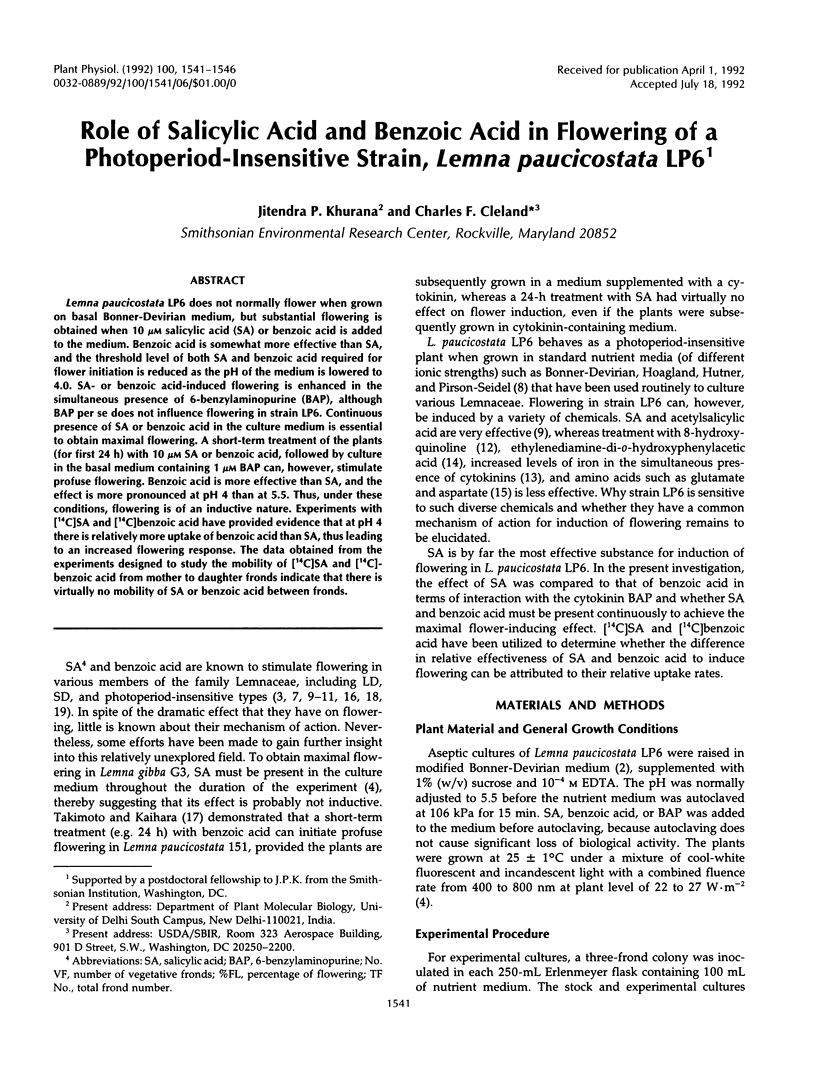
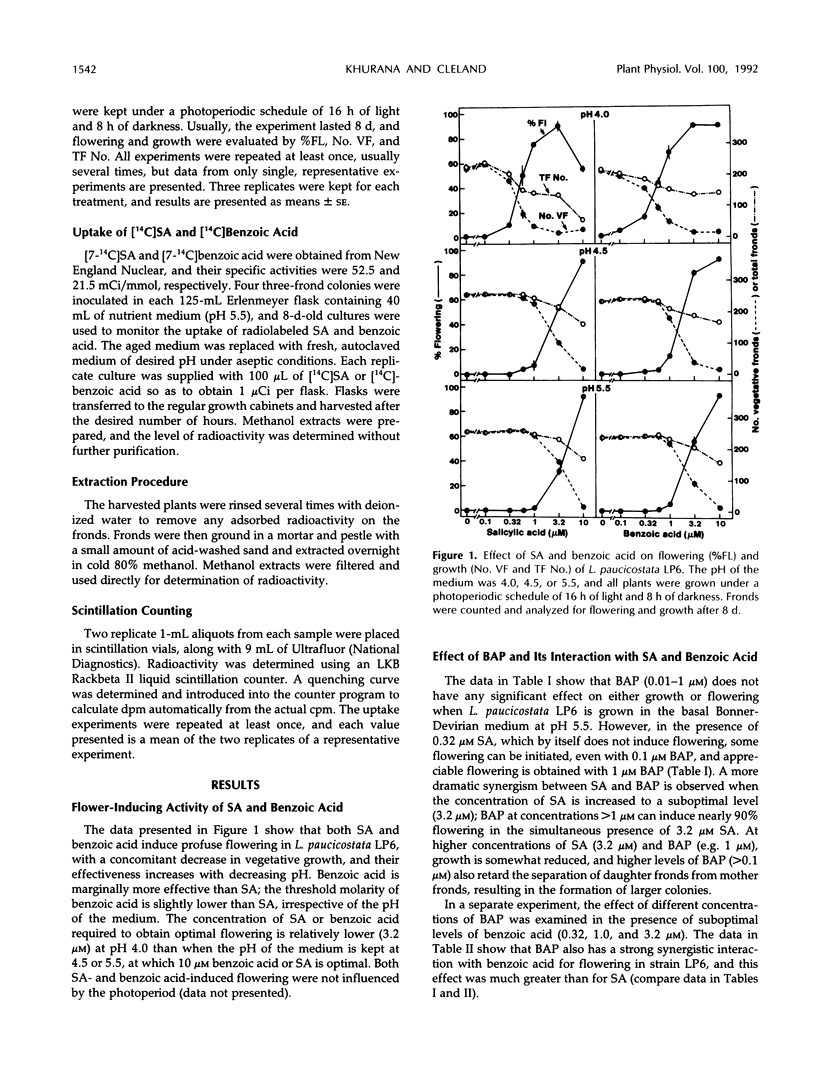
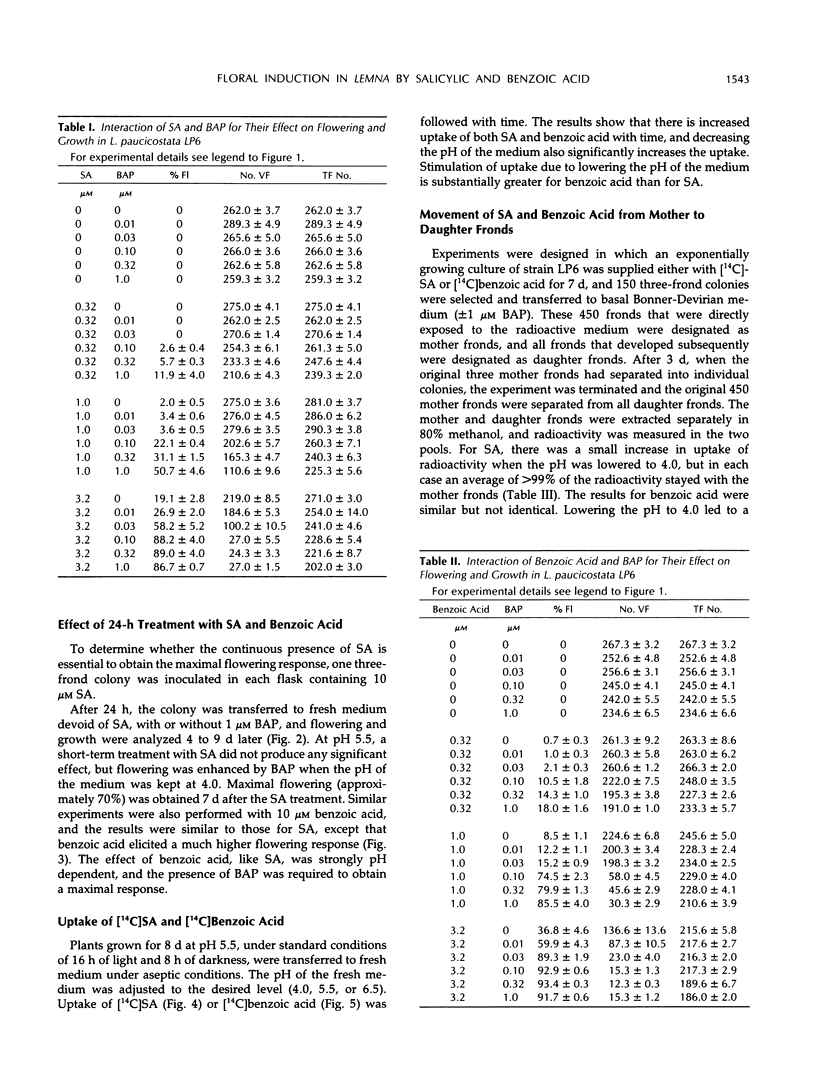
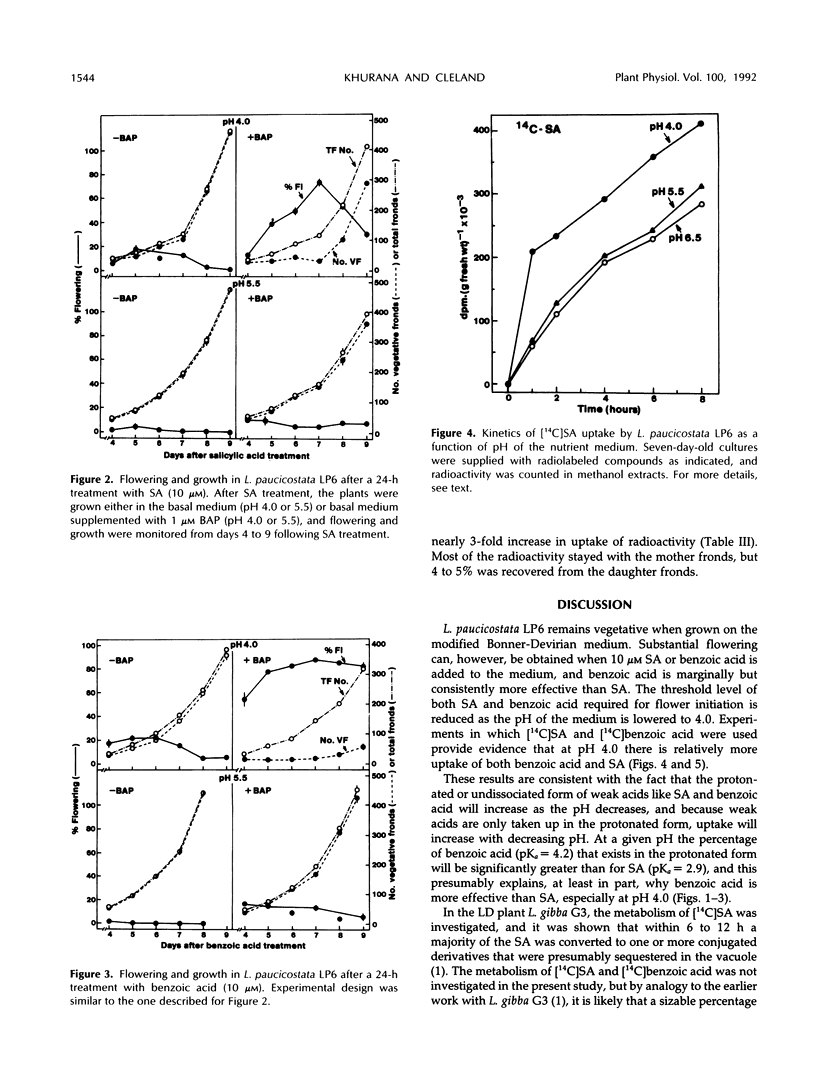
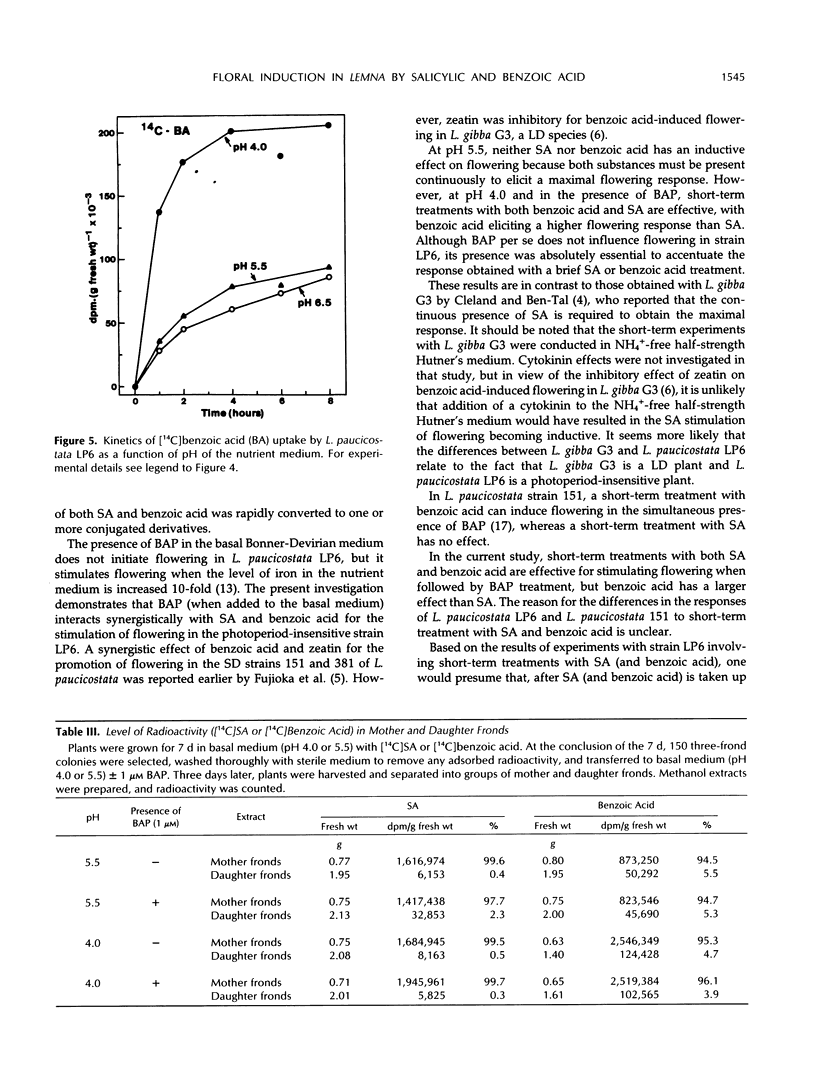
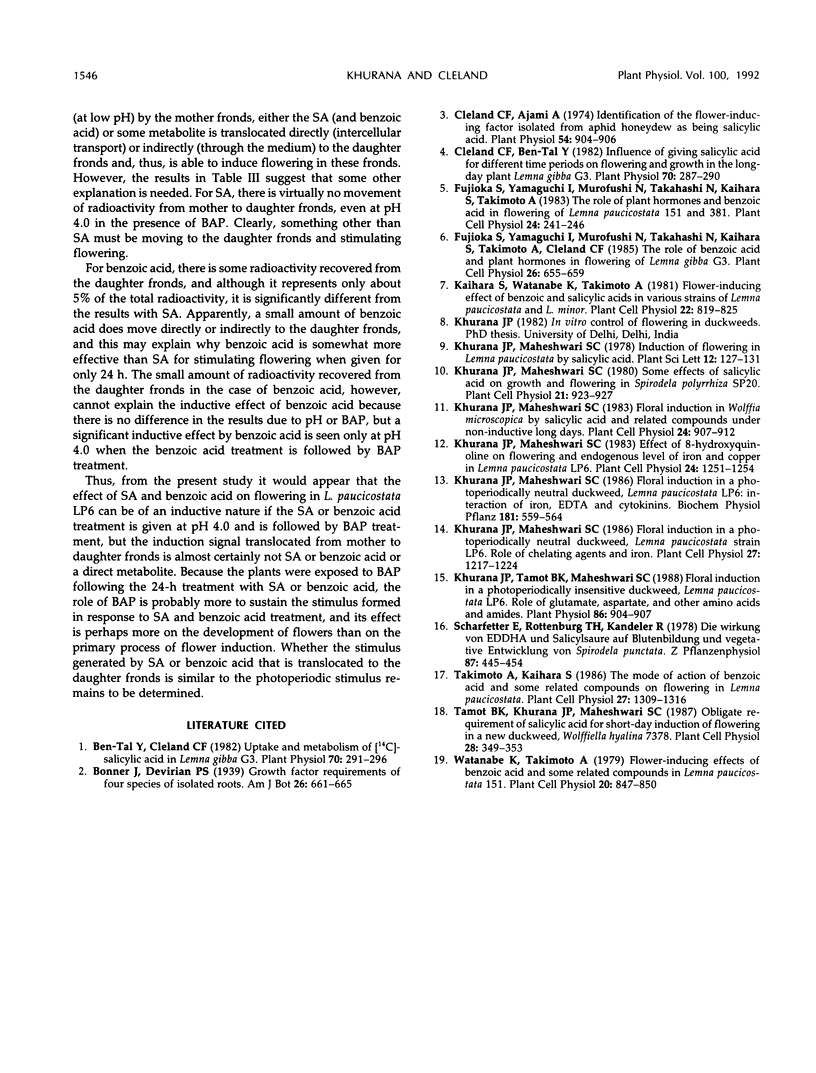
Selected References
These references are in PubMed. This may not be the complete list of references from this article.
- Ben-Tal Y., Cleland C. F. Uptake and Metabolism of [C]Salicylic Acid in Lemna gibba G3. Plant Physiol. 1982 Jul;70(1):291–296. doi: 10.1104/pp.70.1.291. [DOI] [PMC free article] [PubMed] [Google Scholar]
- Cleland C. F., Ajami A. Identification of the Flower-inducing Factor Isolated from Aphid Honeydew as being Salicylic Acid. Plant Physiol. 1974 Dec;54(6):904–906. doi: 10.1104/pp.54.6.904. [DOI] [PMC free article] [PubMed] [Google Scholar]
- Cleland C. F., Ben-Tal Y. Influence of Giving Salicylic Acid for Different Time Periods on Flowering and Growth in the Long-Day Plant Lemna gibba G3. Plant Physiol. 1982 Jul;70(1):287–290. doi: 10.1104/pp.70.1.287. [DOI] [PMC free article] [PubMed] [Google Scholar]
- Khurana J. P., Tamot B. K., Maheshwari S. C. Floral Induction in a Photoperiodically Insensitive Duckweed, Lemna paucicostata LP6 : Role of Glutamate, Aspartate, and Other Amino Acids and Amides. Plant Physiol. 1988 Mar;86(3):904–907. doi: 10.1104/pp.86.3.904. [DOI] [PMC free article] [PubMed] [Google Scholar]


